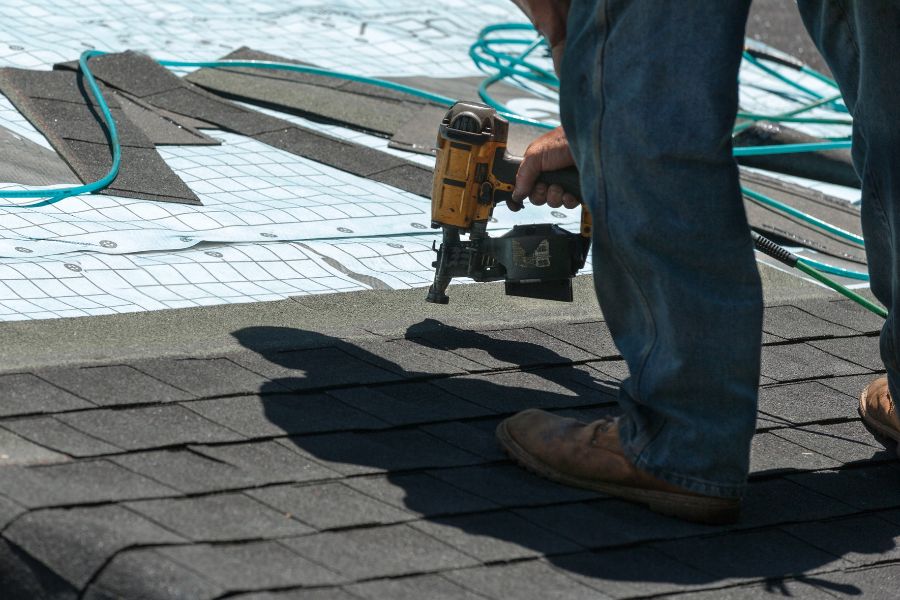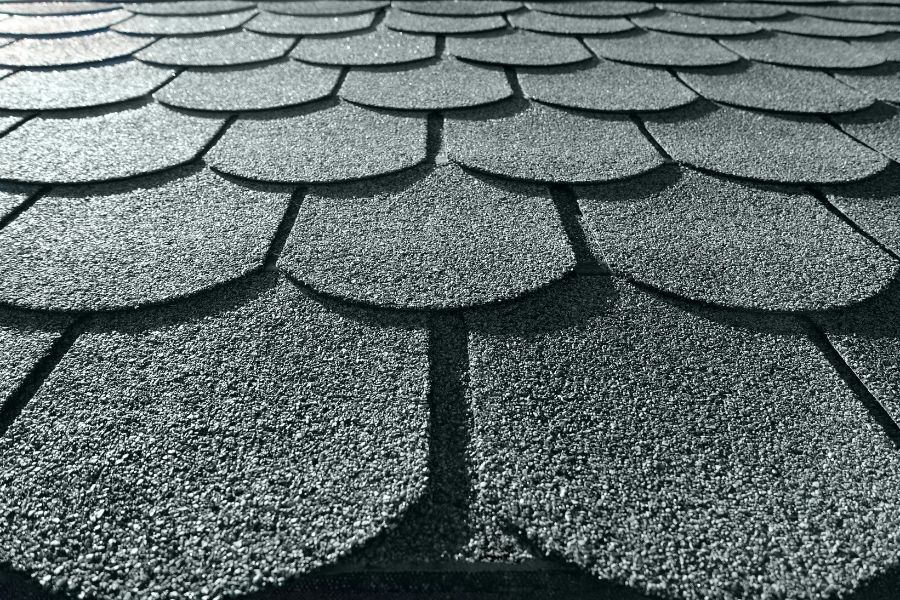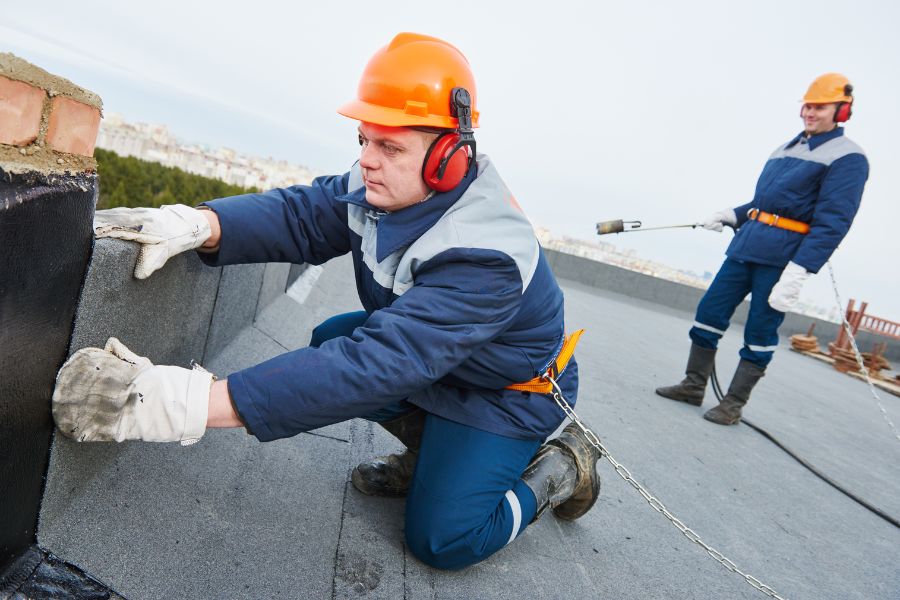Discovering The Best Roofers in Damascus MD and Their Latest Innovations in Residential Roofing Design
The residential roofing industry has been undergoing some significant transformations driven by an array of innovative technologies and design trends. The desire for durable, sustainable, and aesthetically pleasing roofs have spurred a series of remarkable developments in roofing design.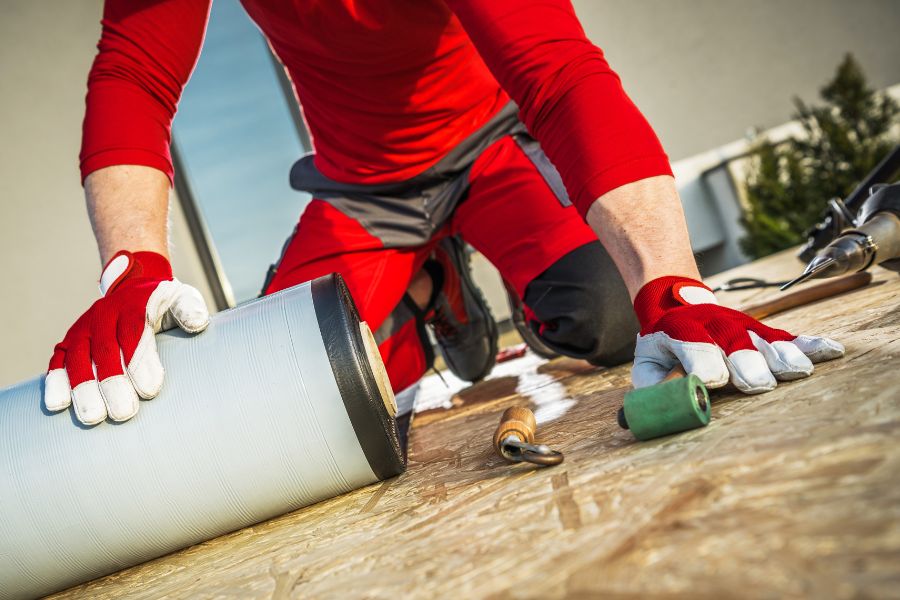
Exploring Roofing Companies in Damascus MD
Materials used in residential roofing have continued to evolve to meet various consumer needs. From traditional materials such as wood, asphalt and slate, the industry has seen the rise of:
- Synthetic Materials: These materials mimic traditional roofing materials but offer superior durability, fire resistance, and weather resistance. Examples include synthetic slate and shake.
- Metal Roofs: Once only popular for commercial buildings or barns, metal roofs are now gaining popularity among homeowners due to their durability, energy efficiency and recyclability.
- Solar Tiles: These integrate seamlessly with existing shingles and offer an aesthetic way to harness solar energy without bulky panels.
Check here for:
Discovering a Reliable Roofing Contractor in Damascus MD
In terms of design trends, there’s a shift towards styles that blend functionality with aesthetics (Find more here: https://www.novaexteriors.com/). Some trending designs include:
- Green Roofs: Green or living roofs are covered with vegetation which provides insulation, absorbs rainwater and helps reduce air pollution.
- Cool Roofs: These are designed to reflect more sunlight than traditional roofs thereby reducing heat absorption and cooling costs.
- Flat Roofs: Flat roofs are making a comeback especially in modern architecture due to their minimalist look.
Roof Repair Services in Damascus MD
The use of advanced technology is also shaping the future of residential roofing:
- Drones: Drones are increasingly used for roof inspections. They offer safer means to survey hard-to-reach areas.
- 3D Printing: This technology could potentially revolutionize the construction industry including residential roofing by bringing down labor costs.
The latest innovations in residential roofing aim at improving durability, energy efficiency and aesthetics while minimizing environmental impact. As these trends continue to evolve, homeowners will have an even wider array of options to choose from, offering more flexibility in terms of design while improving functionality.
Exploring the Benefits of Roofing in Damascus MD
The green revolution in the roofing industry is a transformative movement that has significantly impacted residential, commercial, and industrial construction. With an increasing global emphasis on sustainability and environmental conservation, the focus on green building practices has never been more crucial. This revolution has not just promoted eco-friendly approaches but also introduced innovative materials and methods that have countless benefits.
The Green Revolution in Roofing: An Overview
The green revolution within the roofing industry refers to a shift towards more sustainable and environmentally friendly practices. It encompasses various aspects such as using recyclable materials, incorporating energy-efficient designs, or even integrating renewable energy systems into the structure.
The core principles behind these green initiatives include:
- Resource efficiency: Utilizing materials that are durable, recyclable, and sourced responsibly.
- Energy efficiency: Designing roofs that help minimize energy consumption by enhancing insulation or reducing heat absorption.
- Water efficiency: Implementing systems that can manage stormwater or even harvest rainwater.
- Healthier living spaces: Ensuring better indoor air quality by using non-toxic materials.
Key Benefits
The impact of the green revolution in the roofing industry has led to several key benefits:
- Cost Savings: Green roofs provide natural insulation which reduces the need for heating or cooling significantly lowering energy bills.
- Enhanced Durability: Eco-friendly roofing materials are often highly durable and resilient against weather elements, resulting in longer roof lifespans.
- Improved Aesthetics: Many eco-friendly roofing options are attractive and versatile, enhancing the visual appeal of buildings.
- Increased Property Value: Given their long-lasting nature and cost savings in terms of energy efficiency, homes with green roofs often have improved property values.
- Environmental Conservation: By leveraging sustainable materials and practices, green roofing contributes to conservation efforts by reducing waste generation and minimizing resource exploitation.
Examples of Green Roofing Materials and Technologies
Several materials and technologies have emerged as a result of the green revolution in the roofing industry. These include:
- Recycled Shingles: Made from waste materials such as plastic, wood fiber, and rubber, recycled shingles are an excellent environmentally-friendly alternative to traditional options.
- Cool Roofs: These are designed with a reflective surface that can bounce off more sunlight and heat than regular roofs, reducing the need for air conditioning during hot months.
- Green or Living Roofs: Covered with vegetation, these roofs help insulate buildings, filter pollutants from rainwater, and provide habitats for wildlife.
In summary, the green revolution has significantly changed the landscape of the roofing industry. It has introduced new sustainable practices that not only have environmental benefits but also offer cost savings and other advantages to homeowners. As we move towards a more sustainable future, it’s clear that green roofing will continue to play a central role in construction worldwide.
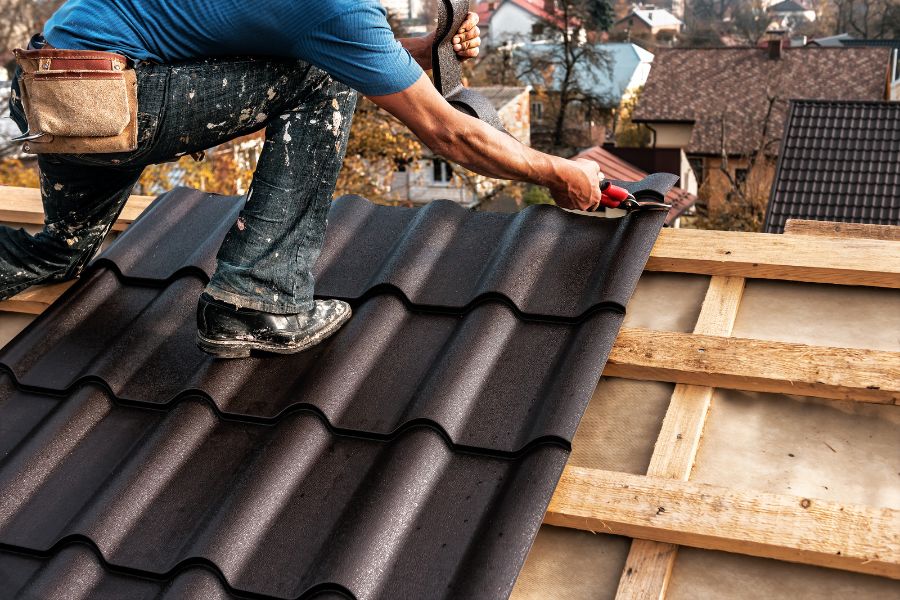
In modern construction, the industry is constantly evolving with innovative materials and techniques. One significant development is the emergence of synthetic roofing materials. This type of roofing has become increasingly popular due to its numerous advantages, from durability to aesthetic appeal.
What Are Synthetic Roofing Materials?
Synthetic roofing materials encompass a range of products made from polymers or polymer composites. These substances are engineered to mimic traditional roofing materials like slate, wood shakes, and tile in appearance but surpass them in performance and longevity. Some commonly used synthetic roofing materials include:
- Rubber Composite: A composite of recycled tires, sawdust, and slate dust.
- Plastic Polymer: Molded from high-quality plastic with a texture similar to wood or slate.
- Fiber Cement: A blend of cement, sand, and cellulose fibers.
These materials are designed to provide robust protection against harsh elements while also enhancing the aesthetics of a building.
- Discovering The Best Roofers in Damascus MD and Their Latest Innovations in Residential Roofing Design
- Discovering Top Roofers in Damascus MD and their Latest Trends in Roofing Material Design
- Roofers in Damascus MD: A Comprehensive Exploration of Emerging Roof Trends and Design Functionality
- Comprehensive Roofing Services: The Best Roofers in Damascus MD for Your Shingle Roof Replacement Needs
- The Crucial Role of Roofers in Damascus MD for Maintaining Roof Health
Advantages Of Synthetic Roofing Materials
The increasing popularity of synthetic roofing materials can be attributed to several key advantages they offer over traditional options:
- Durability: Synthetic roofs are known for their superior resistance against wind, rain, hailstorms, fire, UV rays and even mold growth. They can withstand tough weather conditions without cracking or fading.
- Longevity: While traditional roofs may require replacement every 20 years or less depending on their exposure to harsh weather conditions, synthetic roofs have life expectancies ranging from 50 years up to a century.
- Low Maintenance: Because of their durability and robustness against harsh elements, synthetic roofs require minimal maintenance—they do not rot or decay like organic materials.
- Eco-Friendly: Most synthetic roofs are made from recycled materials which reduce landfill waste. Additionally their lifespan reduces the need for frequent replacements.
- Aesthetic Appeal: Synthetic roofing materials are available in a wide variety of styles and colors. They can mimic almost any type of traditional roofing material, providing the desirable aesthetic without the associated downsides.
Synthetic Roofing: An Investment Worth Making
The initial cost of synthetic roofing may be higher than that of traditional materials. However, when factoring in its longevity, durability, and minimal maintenance requirements, it’s clear that a synthetic roof is an investment worth making.
Many synthetic roofing products also come with substantial warranties which offer homeowners peace-of-mind for many years following installation. Coupled with the environmental benefits of using recycled materials and reducing waste, it’s no wonder that synthetic roofing materials have emerged as a preferred choice among architects, builders, and homeowners in modern construction.
In recent years, metal roofs have become an increasingly common choice for homeowners. This is due to a variety of reasons including their durability, energy efficiency, and aesthetic appeal. With advanced technology and innovation in the roofing industry, metal roofs are gaining a solid reputation for being highly reliable and cost-effective.
Durability and Longevity
One of the key reasons why metal roofs are becoming popular is their exceptional durability. A well-installed metal roof can last as long as the house itself – often up to 50 or 70 years. They can also withstand extreme weather conditions such as high winds, heavy snowfall, hailstorms, and even wildfires.
- Wind Resistance: Metal roofs typically have strong wind resistance capabilities due to their interlocking panels.
- Fire Resistance: Metal is non-combustible making it highly resistant to fire.
- Impact Resistance: The durable material can withstand impacts from hail or fallen branches without sustaining significant damage.
Energy Efficiency
Metal roofs are excellent at reflecting solar radiant heat which can help homeowners save up to 25% in energy costs compared to other types of roofs. The reflective surface of a metal roof keeps the house cooler during summer months by deflecting sunlight away from the home. This reduces the need for air conditioning thereby lowering energy costs.
Aesthetic Appeal
Metal roofing materials come in a variety of styles and colors that can suit any home design or architectural style. Whether you have a contemporary or traditional home, there is likely a metal roof option that will complement your home’s exterior quite nicely.
Environmental Impact
For environmentally conscious homeowners, opting for metal roofing is a sound decision. Most metal roofs contain anywhere between 25%-95% recycled content based on the material used. At the end of its life cycle, it’s also 100% recyclable which significantly reduces waste destined to landfills.
Cost-Effectiveness
Initially, the installation cost of a metal roof can be higher than other roofing materials. However, considering the lifespan and durability of metal roofs, they often prove to be more cost-effective in the long run. Homeowners save on repair and replacement costs associated with other types of roofing materials that aren’t as resilient.
From a real estate perspective, homes with metal roofs often have a higher resale value due to their longevity and low maintenance needs. This is another reason why homeowners are gravitating towards this option.
In summary, the growing popularity of metal roofs among homeowners can be attributed to their durability, energy efficiency, aesthetic appeal, environmental impact and cost-effectiveness. As technology continues to advance in the roofing industry, it’s likely that the benefits and popularity of metal roofing will continue to rise.
The integration of solar power into roofing designs represents a significant evolution in the construction industry. As a result of growing environmental concerns and the rising cost of energy, homeowners and builders are continuously seeking sustainable solutions, with solar-integrated roofing systems becoming increasingly popular.
Solar-integrated roofing systems involve the installation of solar panels directly onto a building’s roof, allowing the structure to generate its own electricity. When compared to traditional power sources, these systems offer numerous benefits, including lower energy bills and a reduced carbon footprint.
Efficiency of Solar Power in Roofing
Solar power integration in roofing is not just environmentally friendly, but it also provides an impressive level of efficiency. Unlike conventional forms of energy that rely on burning fossil fuels, solar panels harness sunlight—a limitless and renewable resource.
- Energy Generation: Solar panels convert sunlight into direct current (DC) electricity. This electricity is then converted into alternating current (AC), which can be used to power appliances or be fed back into the grid.
- Energy Storage: Many modern solar roofing systems come with battery storage options, which store excess energy produced during peak sunlight hours for use during periods without sunlight.
- Cost-Efficiency: While initial installation costs can be high, over time, homeowners can save significantly on their energy bills. Additionally, government incentives often offset initial costs.
Sustainability Factors Associated with Solar Power Integration
Solar power’s sustainability comes from its renewable nature—it relies on the sun’s rays rather than depleting finite resources like coal or gas. In addition to this:
- Reduction in Carbon Footprint: By generating electricity from sunlight instead of burning fossil fuels, solar roofs significantly cut down on carbon emissions.
- Water Conservation: Traditional power plants require vast amounts of water for cooling purposes. On the other hand, solar panels produce electricity without any water usage.
- Recyclability: At the end of their lifespan, the majority of components in solar panels can be recycled to create new panels, reducing waste and promoting sustainable practices.
Looking Ahead: The Future of Solar Power Integration in Roofing
As technology continues to advance, so too will the efficiency and sustainability of solar-integrated roofing systems. Improved battery storage capabilities will allow homeowners to store larger amounts of power for longer periods. Meanwhile, advances in photovoltaic technology promise to enhance the conversion rate of sunlight into electricity.
We are also likely to see more initiatives encouraging the adoption of solar power. Governments worldwide are investing in renewable energy as a way to combat climate change—this includes offering incentives such as tax credits or rebates for homes and businesses that install solar panels.
Overall, the evolution of solar power integration in roofing demonstrates a move towards more sustainable construction practices. With their ability to generate clean, renewable energy while reducing overall carbon emissions, these systems will continue to play a pivotal role in our transition towards a more sustainable future.
